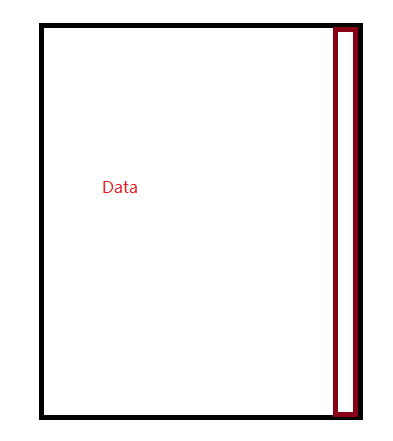接触python已有两年之久,零散地使用tensorflow也将近一年。但是是指今日,如果让我重新建立一个项目,我仍是无能为力。有时候,我会有一种感觉,python这种语言就像是一个无底洞,你永远不知道它在不同的场景中有多少不同的变化,更可怕的是,你无法知晓其中的错误,它是如此的“灵活”,以至于很多的检查都需要依赖程序员自己,而这些错误有时候是很难检查的,特别是对于初学者而言。但是,这又是一个很容易入门的语言,因为,不管你是什么专业的人,你都可以用10行以内的代码做一些简单地事情,而不需要太多的系统知识或者规范。
由于python知识点太过散乱,往往是学了后面忘了前面,所以还是要写一些总结加深印象,由于系统的总结可能太过于漫无目的,而且时间成本过高,所以,暂且以一个小项目为首,将其中的流程知识点串起来
项目背景
项目为一个seq2seq架构,seq2seq架构是一种序列到序列的预测模型,即通过输入和输出都是序列。通常是用在自然语言处理中,比如翻译系统,输入为一维中文,输出为一维英文。改进版也使用在音频处理和图像处理上(这里面需要将音频特征、图像转化为序列形式)。输入为一个单词,输出为此单词的字母顺序排列;比如输入为hello,输出则为ehllo
占位变量tf.placeholder
1 | inputs = tf.placeholder(tf.int32, [None, None], name='inputs') |
tensorflow中,由于我们是首先建立训练模型,后定义真实的输入数据。所有需要占位符来表示需要输入的未知变量,解析如下:
Args:
dtype: 数据类型-The type of elements in the tensor to be fed.
shape: 数据维度,一般为[批大小,序列长度,]-The shape of the tensor to be fed (optional). If the shape is not
specified, you can feed a tensor of any shape.
name: 数据名字-用于在tensorboard显示标注-A name for the operation (optional).
Returns:
A Tensor that may be used as a handle for feeding a value, but not
evaluated directly.
- tf.contrib.layers.embed_sequence(ids, vocab_size, embed_dim)
词嵌入,一种one-hot编码的改进版,即将单词映射成数字表示,然后将数字转换为嵌入矩阵向量。
Args:
ids: 形状为[batch_size, doc_length]的int32或int64张量,也就是经过预处理的输入数据。
vocab_size: 输入数据的总词汇量,指的是总共有多少类词汇,不是总个数
embed_dim:想要得到的嵌入矩阵的维度(自主设定,表示嵌入广度)
Returns: [batch_size, doc_length, embed_dim]
Tensor of [batch_size, doc_length, embed_dim] with embedded sequences.
- tf.nn.dynamic_rnn
1 | encoder_output, encoder_state = tf.nn.dynamic_rnn(cell, encoder_embed_input, |
这里的dynamic_rnn即构造循环神经网络,但是相对于传统的RNN有一定的改进,对于一般的RNN,对于输入序列,我们是强制性统一到最大长度,对于短于最大长度的进行补齐,但是这样会带来一个计算问题,所以这里使用了dynamic,动态RNN,它增加了一sequence_length输入参数-序列长度,这样,计算时只取当前长度的数值进行计算,输出时只保留当前长度的输出
参考:https://blog.csdn.net/u010223750/article/details/71079036
- tf.strided_slice
1 | ending = tf.strided_slice(data, [0, 0], [batch_size, -1], [1, 1]) |
Args:
input_: A Tensor.
begin: An int32 or int64 Tensor.
end: An int32 or int64 Tensor.
strides: An int32 or int64 Tensor.
对数据矩阵进行切片,strides一般为全1值,这里的意思相当于切除最后一个字母。
- tf.nn.embedding_lookup
输入张量映射
1 | # 得到映射嵌入[128,?,15]/[128,length,15] = lookup([30,15],[128,legth]) |
第一个参数为映射字典,第二个参数为映射索引
tf.identity(input, name=None)
tf.identity就是为了在计算图获取这个值而创建的虚拟节点,只是用来获取中间值tf.contrib.seq2seq.sequence_loss
Args:
logits: 训练输出的概率矩阵-A Tensor of shape [batch_size, sequence_length, num_decoder_symbols] and dtype float. The logits correspond to the prediction across all classes at each timestep.
targets: 真是输出值-A Tensor of shape [batch_size, sequence_length] and dtype int. The target represents the true class at each timestep.
用于计算加权交叉熵损失,加权交叉熵参考梯度计算和网络更新
- 梯度计算:gradients = optimizer.compute_gradients(cost)
- 网络更新:train_op = optimizer.apply_gradients(capped_gradients)
将梯度应用在变量上,返回此操作。即:使用该梯度进行权重更新
tf.clip_by_value(grad, -5., 5.)
数据截断,这里主要为了梯度裁剪:约束梯度值,防止梯度爆炸/跨度过大。是梯度范围限制在-5~5sess.run()
Args:
fetches: 元组:一些用于计算结果的张量,用于去除计算结果tensor (比如我们要求姐y=w*x中的w,这里的fetches相当于y)
feed_dict: 字典:输入变量占位符 (这里的feed_dict相当于x)

